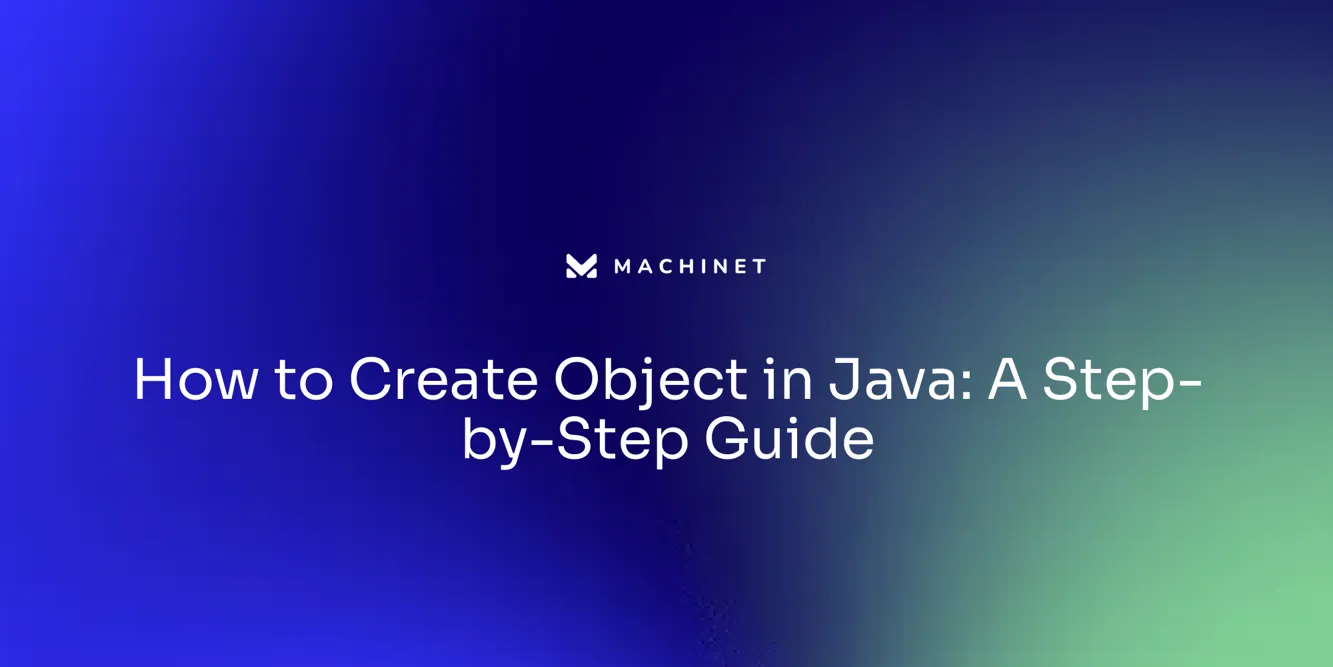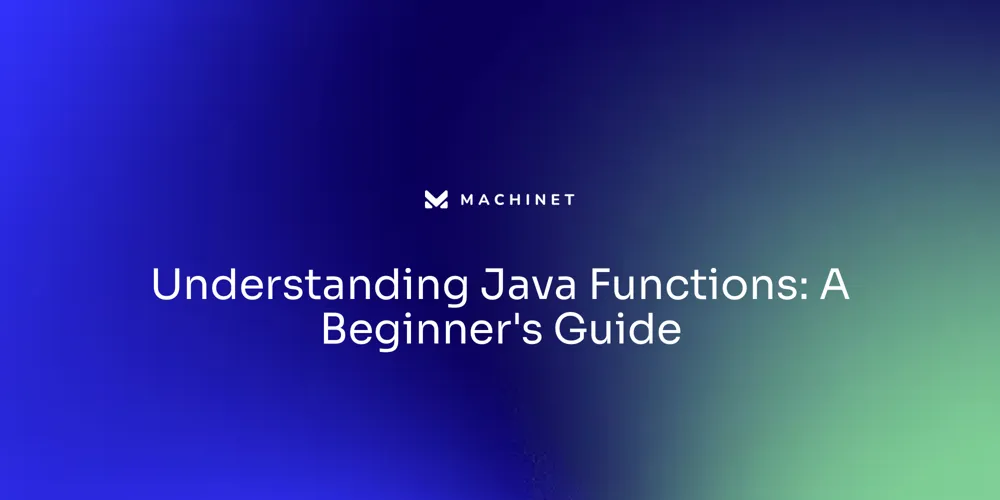
Table of Contents
- Understanding Objects in Java
- Declaring Classes
- Instantiating Objects
- Initializing Objects
- Calling Methods on Objects
- Constructor Overloading
- Using Constructor Parameters
- Initializing Objects with Initialization Blocks
- Instance Initialization Blocks
- Static Initialization Blocks
Introduction
Java programming revolves around the concept of objects, which serve as the primary components of programs. These objects are representations of real-world entities, possessing both data and associated behaviors. Creating and understanding objects in Java is crucial for any developer, as they contribute to the functionality, efficiency, and modularity of software applications.
This article will explore the fundamental aspects of objects in Java, including their declaration, instantiation, initialization, and usage. It will also touch on the latest advancements in Java, such as the introduction of new features in JDK 23. By delving into these topics, readers will gain a comprehensive understanding of objects in Java and how to leverage them effectively in their programming endeavors.
Understanding Objects in Java
Java programming revolves around the concept of objects, which serve as the primary components of programs. These objects are representations of real-world entities, possessing both data and associated behaviors.
To illustrate, consider a Lego block as an analogy for an object. Just as a Lego block has its own color, shape, size, and function in the construction of a Lego structure, an object in Java has its own attributes and methods that contribute to the functionality of a Java program.
It's important to note that, although objects are individual entities, they don't necessarily have a unique copy of each method. The same method implementation can be shared among different objects, with each object pointing to that shared implementation.
Creating objects in Java is a fundamental skill for any developer. However, striking a balance is essential as creating too many short-lived objects can have a higher cost than cleaning them up.
This is due to the resources consumed in their creation. Objects in Java are not just about storing data, they also perform tasks.
These tasks are executed through methods, blocks of code that carry out specific functions. This makes methods a vital tool for organizing code, promoting reuse, and enabling modular design. The properties of objects, represented by instance variables within a class, define the state of an object. Object-oriented programming in Java aims to implement real-world entities, focusing on key aspects such as inheritance, abstraction, and polymorphism, while hiding complexities. In the latest advancements, Java Development Kit 23 (JDK) introduced four new features, including an improved Vector API and a preview of primitive types in patterns. Furthermore, Java has enhanced the protocol by which programs are launched, allowing instance main methods that are not static, public, and do not require a String[] parameter. In essence, understanding and efficiently creating objects in Java is a crucial aspect of the language that underpins the development of robust, efficient, and modular software applications.
Declaring Classes
In the realm of Java programming, a class acts as a blueprint, defining the structure and behavior of objects. It comprises fields, which are variables used to store data, and methods or functions that perform operations on the data.
The declaration of a class involves the use of the class keyword, followed by the class name. For instance:
java
public class MyClass {
// class body
}
In the context of the Java language, pattern matching is a handy tool that matches a value against a pattern, which includes variables and conditions.
If the value corresponds to the pattern, the respective parts of the value are bound to the pattern's variables, leading to code that is more intuitive and readable. Moreover, with the release of JDK 10, the release model became date-driven, occurring every six months, rather than being content-driven.
Major releases were renamed as Feature Releases to reflect this change. This evolution of Java releases has seen the introduction of new enhancements, including unnamed classes and instance main methods, which were previewed in JDK 21 and are set to preview again in JDK 22 with significant changes. Lastly, Java's popularity has been steady since its inception in 1995. Despite the emergence of modern languages such as Kotlin, Java maintains a strong presence in the top three most demanded programming languages, thanks to frameworks like Spring used by many top-tier companies. Thus, understanding Java syntax and semantics remains crucial for writing efficient Java code.

Instantiating Objects
In the realm of Java, creating an instance of a class, or an object, is accomplished using the new keyword, followed by the class name and a pair of parentheses. This process is referred to as object instantiation.
Here's an illustration:
java
MyClass instance = new MyClass();
This simple act of object creation has profound implications. It's the first step towards leveraging the power of object-oriented programming (OOP), a paradigm that models real-world entities and provides a framework for organizing and maintaining code.
With OOP, you can create multiple instances from a single class, reducing redundancy and enhancing scalability. However, it's worth noting that while Java can be speedy, the cost of creating objects can sometimes outweigh the benefits, especially if the objects are short-lived.
Therefore, creating objects should be done judiciously, keeping in mind the trade-off between code simplicity and runtime efficiency. Furthermore, pattern matching in Java adds an additional layer of expressiveness. It matches a value against a pattern, binding corresponding parts of the value to variables in the pattern. This functionality simplifies the extraction of data from complex data structures and makes the code more readable and intuitive. In conclusion, understanding the ins and outs of object creation, OOP principles, and pattern matching is crucial in mastering Java and becoming an efficient developer.
Initializing Objects
Once an object is created in Java, it's possible to assign values to its properties. This is accomplished via the dot notation, a syntax where the name of the object is followed by a dot and the property name.
Consider this example in Java:
java
obj.propertyName = value;
Properties, also referred to as fields in Java, represent the characteristics or attributes that define the object's state. They are usually represented by instance variables within a class.
In the realm of object-oriented programming, these properties mimic real-world entities, encapsulating data and behavior in a manner akin to how a real-world object like a cup has properties such as color, design, weight, etc. It's essential to understand that when dealing with objects, a copy of the reference's value (memory address) is passed to the method, not the object itself.
This allows for modification of the object's properties within the method while keeping the reference itself unchanged. Furthermore, methods, which are blocks of code that perform specific tasks, are crucial components of objects in Java. For instance, the main method is the entry point where the program begins execution and can contain statements like System.out.println, which displays a string on the console. Finally, it's worth noting that Java, despite its potential for high speed, advises against excessive object creation due to the high cost associated with it, especially for short-lived objects.

Calling Methods on Objects
In Java, methods are integral to the functionality of objects, enabling them to perform specific actions. You invoke a method on an object by adopting the dot notation, akin to how fields are accessed.
Here's a basic example:
java
obj.methodName();
Methods in Java can be powerful tools as they can manipulate the state of the object they belong to. This feature is particularly evident in instance methods, which are invoked on instances of a class.
These methods can access and modify the instance variables of their respective objects, encapsulating behavior related to an object's state. One important concept to grasp in Java is the difference between 'passing by value' and 'passing by reference'.
When you pass a primitive type, a copy of its value is passed to the method, leaving the original variable unchanged. On the other hand, when you pass an object reference, the reference's value (memory address) is copied, not the object itself.
Thus, you can modify the object's properties inside the method, but you can't change the reference itself. Moreover, Java's Reflection API offers a powerful tool for developers to analyze classes, interfaces, and their members at run time. It enables the creation of objects, invocation of constructors, and methods, among other capabilities. Finally, it's important to note that Java, unlike some languages, has elements that are not objects (e.g., primitives) and requires special mechanisms for handling them. There's also a special case for handling null, which refers to absent values in Java.

Constructor Overloading
In the realm of Java, constructors are unique methods that serve a vital purpose - they initialize objects. This initialization is an integral part of the object creation process.
Java, as a language, provides a default constructor, which is parameter-less, as a standard feature. However, developers have the freedom to define their own constructors, with varying parameters, a concept known as constructor overloading.
This enables the creation of objects in different initial states. Overloading a constructor involves the creation of multiple constructors, each with a unique parameter list.
The recent release of the Java Development Kit 23 (JDK) introduced four new features, one of which is the Vector API. This API is designed to express vector computations that are compiled at runtime, thus optimizing vector instructions on various supported CPU architectures. This is just one example of how Java continues to evolve and enhance the developer's toolkit. As a Java developer, understanding the power and flexibility of constructors helps in writing code that is not only functional but also clean, readable, and maintainable. By embracing the principles and best practices of the Java language, you can elevate the quality of your code and become a more proficient Java developer.
Using Constructor Parameters
Constructors are a fundamental part of Java, allowing us to pass specific values when creating objects. These constructor parameters are crucial in initializing object fields.
Let's consider this Java class:
```java public class MyClass { private int value;
public MyClass(int initValue) {
value = initValue;
}
}
MyClass obj = new MyClass(10); ```
In this example, MyClass is initialized with an int parameter named initValue. This parameter is used to set the initial value of the value field when an object of MyClass is created.
An instance of MyClass is then created with new MyClass(10), passing 10 as the initial value for the value field. Java has continually evolved, introducing new features that enhance its functionality.
The switch construct, for instance, has evolved significantly since Java 14, with the introduction of switch expressions and pattern matching in Java 21. The upcoming Java 23 is anticipated to support primitive types in patterns, further revolutionizing its use. The recently released Java Development Kit 23 (JDK) introduces several new features, including Vector API and a preview of primitive types in patterns. A good organization and maintainability of your Java code can significantly enhance its readability and reduce bugs, ultimately making it more efficient and reliable. In conclusion, understanding Java constructors and the evolving features of Java is essential for writing clean, efficient, and maintainable code.
Initializing Objects with Initialization Blocks
Within the vast expanse of the Java programming language, objects are initialized not just through constructors, but also via initialization blocks. These blocks are put into action at the moment an object is created, even before the constructor comes into play.
They serve as a mechanism to set up fields or execute auxiliary setup logic. There are two categories of initialization blocks: instance initialization blocks and static initialization blocks.
Instance initialization blocks are affiliated with the object they belong to, manipulating their state. The 'this' keyword within an instance method alludes to the current instance of the class, often used to distinguish between instance variables and parameters with identical names.
On the other hand, static initialization blocks, much like the main method, serve as the onset point for program execution. They contain statements, just like any other method.
For instance, the System.out. Println statement within the main method showcases the string 'Welcome to Java!'
on the console. The term 'string' in programming refers to a series of characters. The intricacies of object initialization in Java embody real-world entities like inheritance, abstraction, and polymorphism. This focus on object-oriented programming encapsulates functionality and enhances code reusability. It binds together the data and the functions operating on them, ensuring that no other part of the code has access to this data, except for that specific function. In this way, objects communicate by sending and receiving information to each other, performing tasks assigned by the programmer.
Instance Initialization Blocks
Instance initialization blocks in Java are a powerful tool for setting up instance variables. These blocks, enclosed in curly braces and positioned within the class but outside any method or constructor, spring into action each time an object is formed.
For instance:
```java public class MyClass { private int value;
// instance initialization block
{
value = 10;
}
} ``` This example illustrates an instance initialization block setting the 'value' variable to 10. The beauty of these blocks is their flexibility and the convenience they offer in initializing instance variables.
Moreover, the Java Language Specification (JLS) has introduced more flexibility in declaring a program's entry point, allowing instance main methods. This change accommodates main methods of a launched class to have public, protected, or default access, providing support for static main methods without parameters.
The introduction of 'Unnamed Classes and Instance main methods' in Java 21 further simplifies the learning curve for beginners. This feature allows beginners to write their first programs without needing to understand language features designed for larger programs, enabling a smooth transition from single-class programs to more advanced features as their skills develop. However, it's crucial to understand that Java is continually evolving, with features being added and deprecated. For instance, between Java 18 and 21, the finalization feature was deprecated, indicating that keeping up with these changes is vital for efficient programming.
Static Initialization Blocks
Java's static initialization blocks play an integral role in setting up static variables. These blocks, housed within curly braces and preceded by the static keyword, are executed only once when the class is initially loaded.
Here's a simple illustration:
```java public class MyClass { private static int value;
// static initialization block
static {
value = 10;
}
}
``
This code snippet demonstrates the initialization of a static variable,value, using a static initialization block. The variablevalueis set to 10 during the loading of theMyClass`.
This feature enables effective control over initial setup, particularly pertinent when dealing with complex projects. Moreover, Java's static initialization blocks offer flexibility in code structuring, enhancing readability and maintainability.
The use of such blocks can increase the overall performance of the application, especially when paired with other Java standard libraries and features. However, it's essential to understand the trade-offs involved with their usage to avoid any unintended side effects. Furthermore, the use of static initialization blocks aligns well with Java's best practices, like adhering to specific naming conventions and avoiding abbreviations. This ensures the code is easy to read, understand, and modify, making it a powerful tool in the hands of both experienced developers and enthusiastic learners.

Conclusion
In conclusion, understanding objects in Java is crucial for developing efficient and modular software applications. Objects represent real-world entities with data and behaviors, and their creation, initialization, and usage are key aspects of Java programming. Java offers features like class declaration, object instantiation, method calling, and constructor overloading.
JDK 23 introduces advancements such as the Vector API and primitive types in patterns, enhancing Java's functionality. Creating objects should be done judiciously to optimize resource consumption. Object initialization involves assigning values to properties using the dot notation.
Methods play a vital role in performing tasks on objects. Constructor overloading allows for different initial states of objects by defining multiple constructors with varying parameters. Initialization blocks help set up instance or static variables before program execution.
By mastering objects in Java and staying updated with advancements, developers can write efficient and maintainable code for software applications. In summary, understanding objects in Java is essential for developers to create efficient and modular software applications. By leveraging the features and advancements in Java programming, developers can optimize resource usage and write clean code.
AI agent for developers
Boost your productivity with Mate. Easily connect your project, generate code, and debug smarter - all powered by AI.
Do you want to solve problems like this faster? Download Mate for free now.




